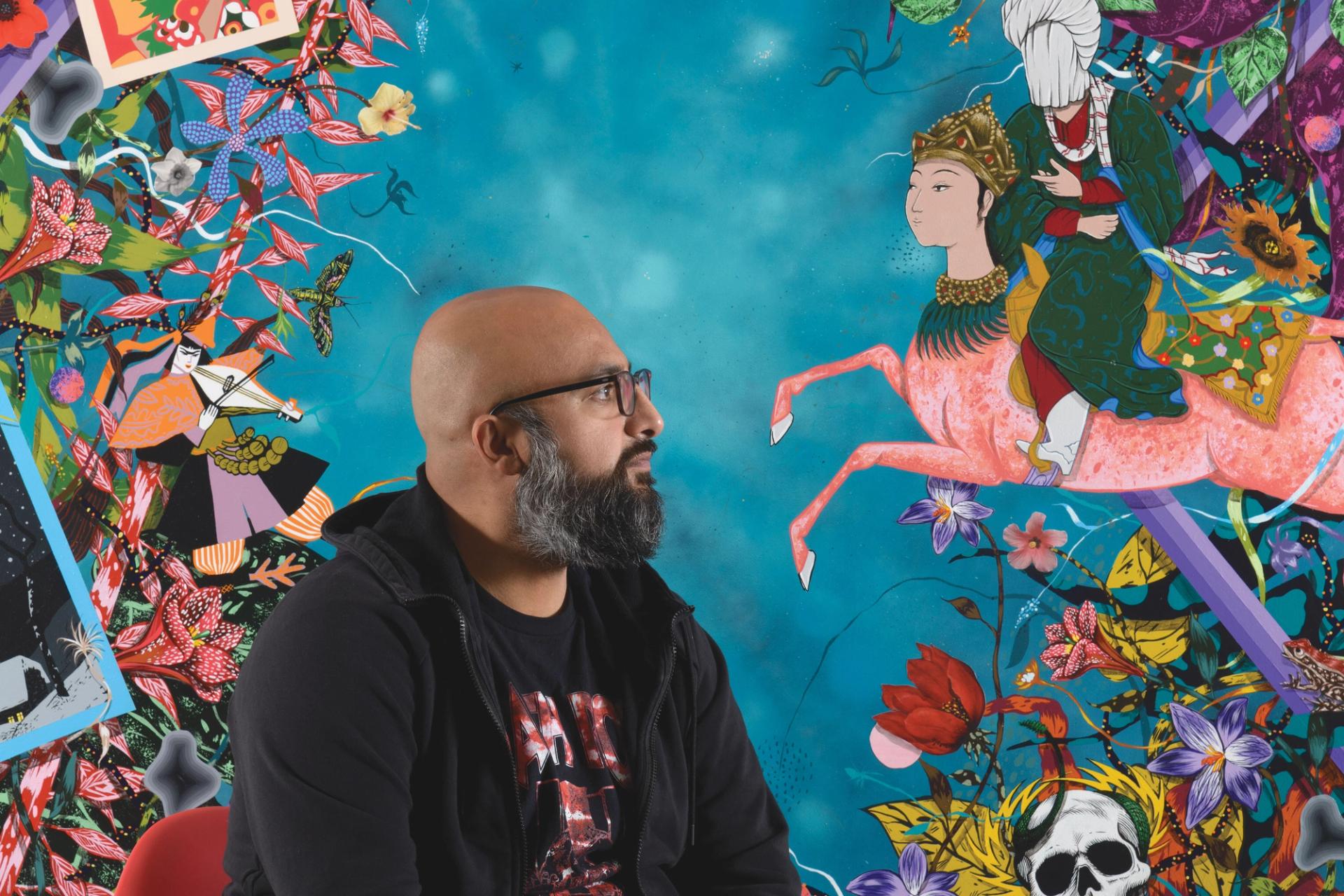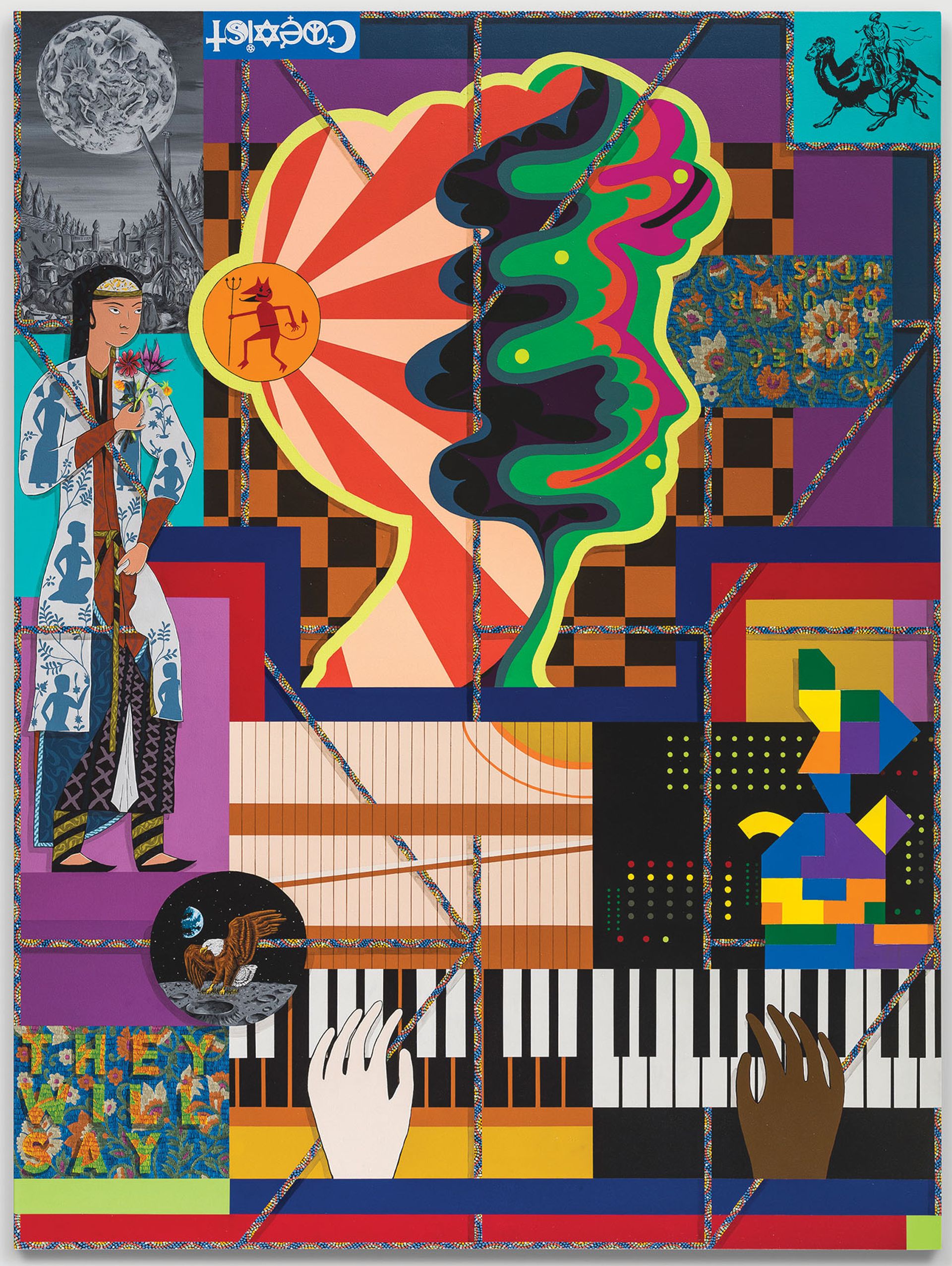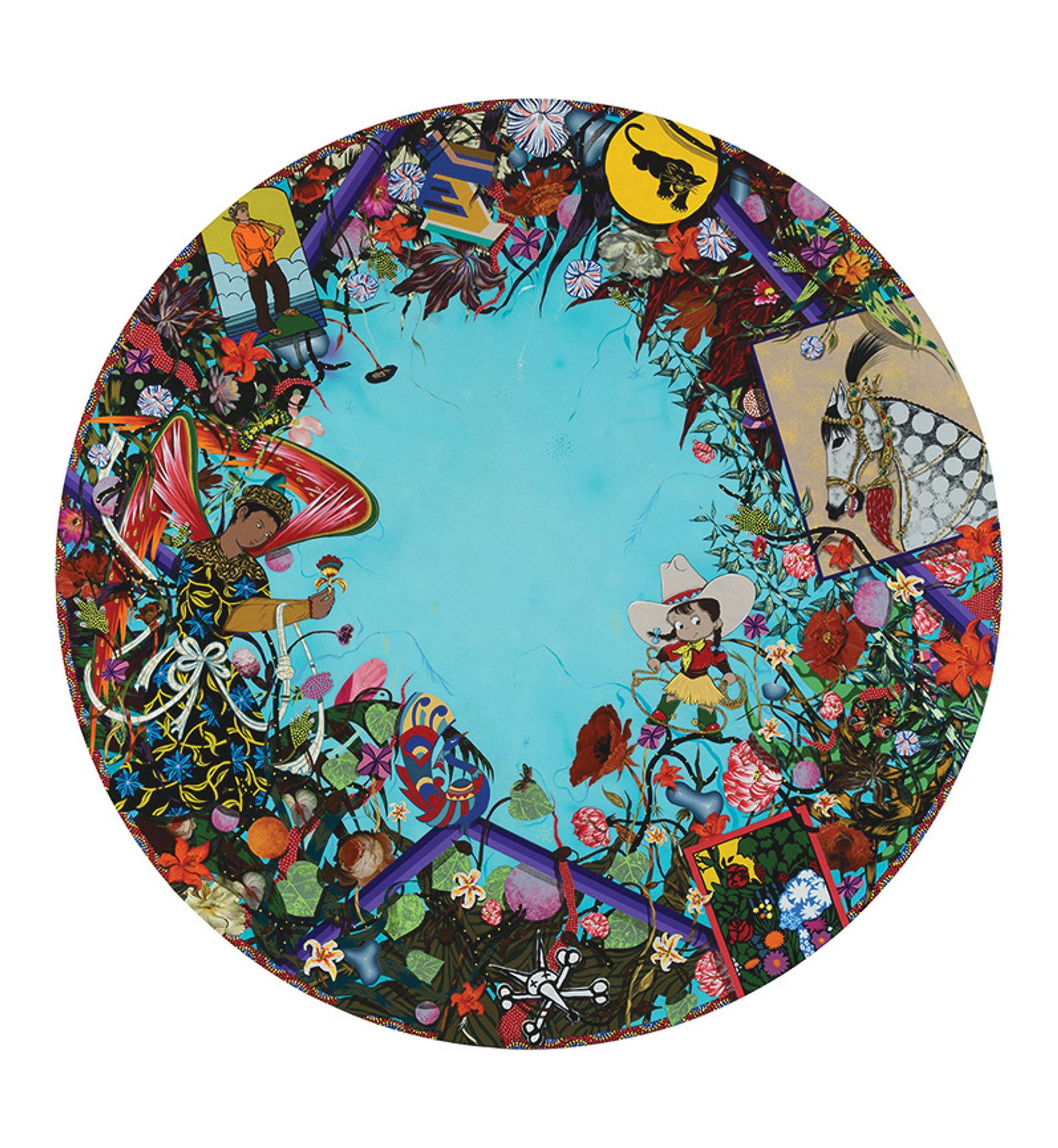‘More is more’: Iranian American artist Amir H. Fallah’s LA show takes a maximalist approach to cultural exchange
Tehran-born artist draws on his migrant experience for new exhibition “The Fallacy of Borders” at UCLA’s Fowler Museum

The work of Amir H. Fallah, who was born in Tehran during the Islamic Revolution, reflects on his migrant experience
Alan Shaffer
Los-Angeles based artist Amir H. Fallah has always taken the “more-is-more” approach to painting. “I really just try to cram everything in there that I can,” he says. It stands to reason, then, that his first institutional solo exhibition in the city, The Fallacy of Borders at the Fowler Museum at the University of California, Los Angeles, feels like a love letter to maximalism itself, a meditation on the electric noise of an increasingly interconnected age.
Fallah, who was born in Tehran at the height of the Islamic Revolution, mines the diasporic Iranian American experience through the spirit of remix, drawing on traditions as disparate as 17th-century Flemish still-lifes and graffiti to achieve a vibrant depth of meaning in his work. Fallah’s is not a practice of rote metaphor; as the title of the show suggests, his art eschews boundaries, material and cultural alike, in service of weirder, wilder ends.

They Will Say a Collection of Untruths (2022) critiques the promise of co-existence of people from different religious, cultural and religious backgrounds, and warns that despite ideals of peace and harmony, false narratives continue to be constructed on the basis of faith, race and gender
Photo: Alan Shaffer; courtesy of the artist and Shulamit Nazarian, Los Angeles
“This exhibition spotlights Fallah’s broad visual literacy, experimental drive and creative receptivity—all anchored in his migrant experience,” says curator Amy Landau, the director of interpretation and education at the Fowler Museum. “He narrates from trauma and celebration, as well as his roles as a husband, father and confidant, which lends a deeply humane aspect to his social critique.”
Organised around eight different “thematic modes”, The Fallacy of Borders tracks Fallah’s artistic evolution from a teenage zine-maker and publisher of Beautiful/Decay, the magazine and book series highlighting the early 2000s avant-garde, to his career as a multidisciplinary artist and master storyteller. He spoke with The Art Newspaper about his thoughts on collaboration, misinterpretation and visual archaeology.
The Art Newspaper: Can you speak about the way the Beautiful/Decay archive is centred in this exhibition?
Amir H. Fallah: I was actually surprised that the curator, Amy Landau, wanted to include the Beautiful/Decay archive in the show. I started making this zine not pre-internet but on the internet pre-social media, and sourcing the imagery I would use from graffiti and other subcultures I wanted to explore. She was the one who made the connection between the work I’m making now, like my newer grid paintings, and this project I started all the way back in high school, like the layering of different references and the maximalism. I’ve always thought of myself as a sort of archaeologist, researching and trying to discover new angles. Apparently I’ve been doing this stuff since I was 16! I never really thought about it that way, but seeing it through her eyes helped me really see what all of this has been about since the beginning.
The show features four stained-glass windows you created with Judson Studios in Los Angeles. How does collaboration fit into your practice?
Oh, collaboration is so important, honestly. The most important part about being an artist is being curious, I think, and being willing to try something new. I’ve always been really curious about anything and everything; the fact that I’m doing a show with a museum that has such a large archive meant that I could really get deep into researching and selecting objects that speak to each other. I never want to end up in a situation where I’m just making copies of myself, or a viewer can predict what I’m going to do next. I think it’s also useful to take risks or, if you try something new, to actually risk it being bad or not working. I really have a “more-is-more” approach to my pieces, and including more elements helps a broader range of people navigate the information in the paintings or sculptures or whatever it is they’re looking at.
 In the tondo painting Cowgirl (2020), Fallah draws on the romanticised vision of the American West that hid the brutal treatment of Indigenous people
In the tondo painting Cowgirl (2020), Fallah draws on the romanticised vision of the American West that hid the brutal treatment of Indigenous people
Photo: Alan Shaffer; courtesy of the artist and Shulamit Nazarian, Los Angeles
What do you think is least understood about your work?
People sometimes don’t understand that I understand how the work is functioning. They see something they think is too illustrative, or graphic, or too colourful and vibrant, and don’t necessarily get that the maximalism and colour is a seduction, it’s a way of luring viewers into the deeper political messaging of the work. It’s a very intentional aesthetic choice; I want lots of different kinds of viewers to be able to get something out of the paintings, whether it’s cultural hybridity or art history or something more subversive. The techniques I’m using are very much on purpose, and the work has lots of different layers that viewers can interact with.
• Amir H. Fallah: The Fallacy of Borders, Fowler Museum, UCLA, until 14 May
• Amir H. Fallah: A War on Wars, Shulamit Nazarian, until 25 March
